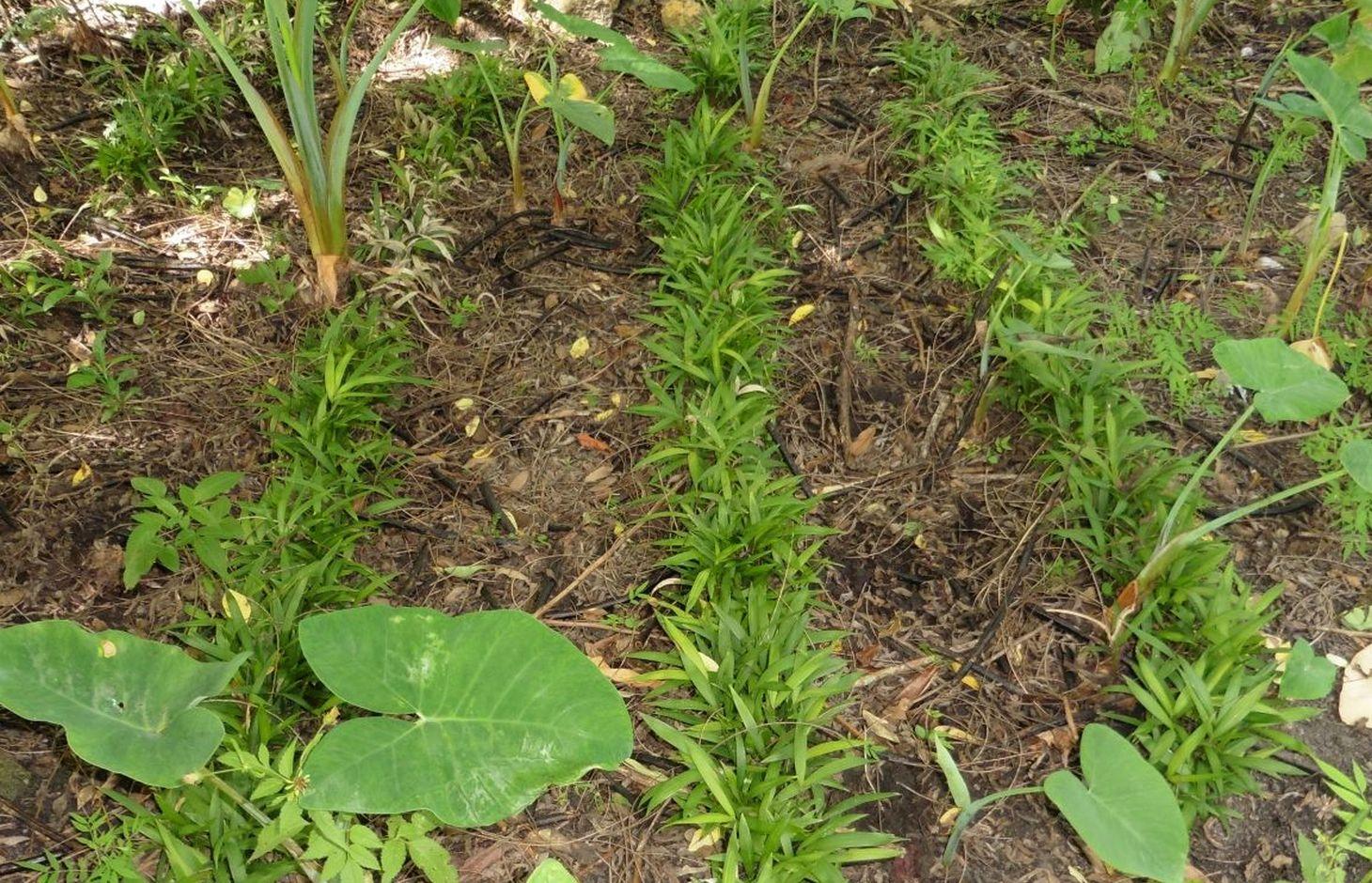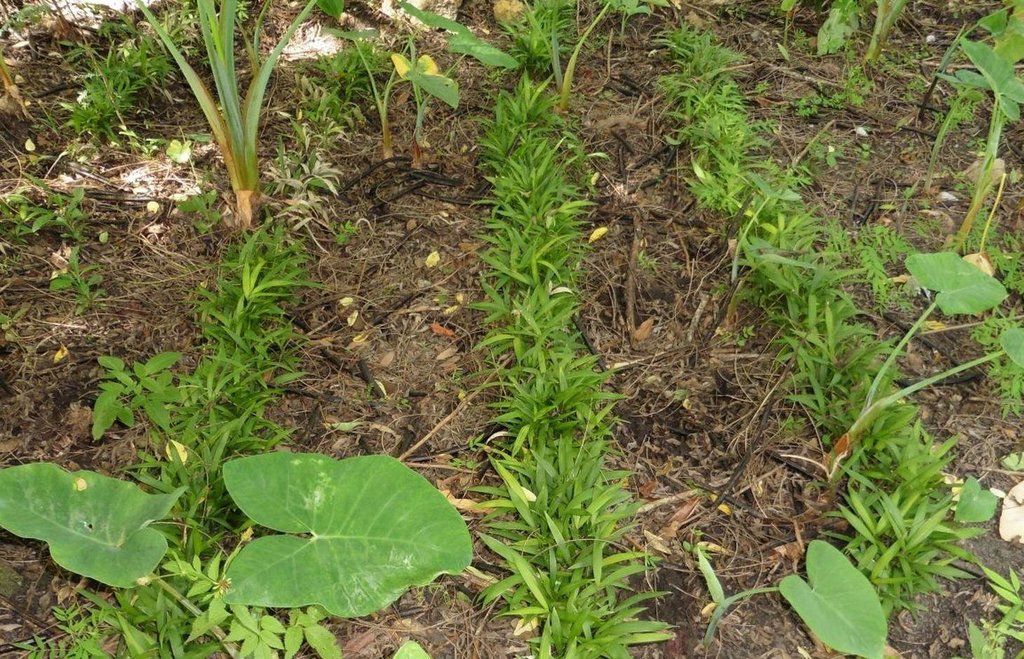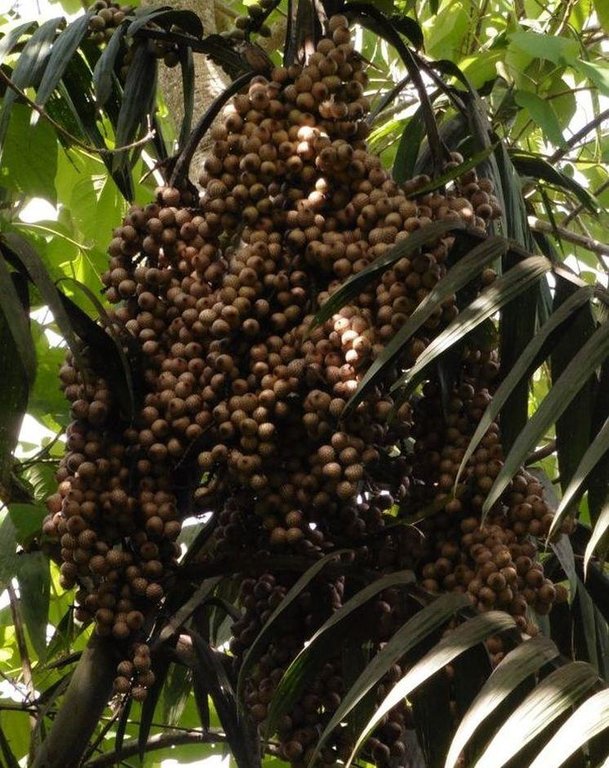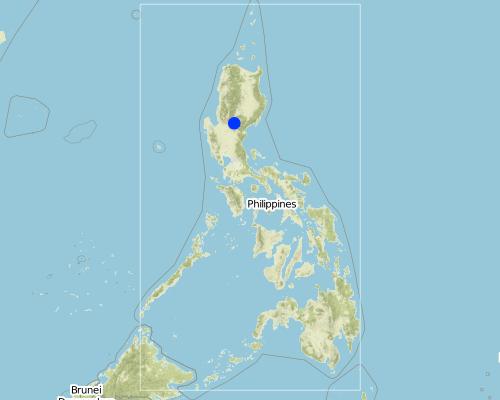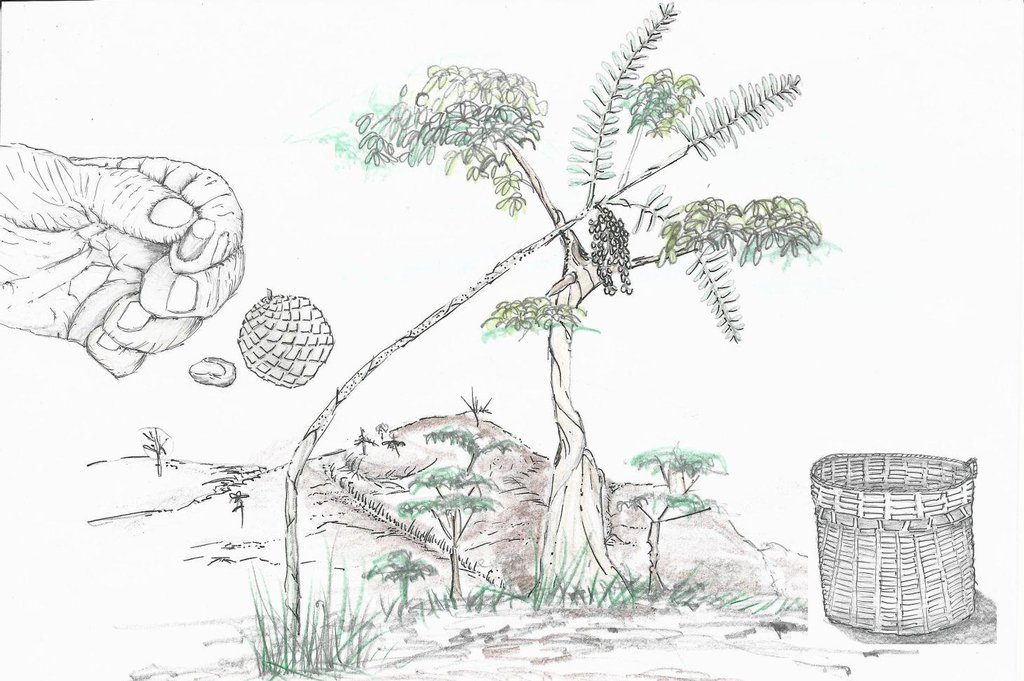Littuko Growing for Forest Enhancement [Philippines]
- Creation:
- Update:
- Compiler: Philippine Overview of Conservation Approaches and Technologies
- Editor: –
- Reviewer: David Streiff
technologies_1708 - Philippines
View sections
Expand all Collapse all1. General information
1.2 Contact details of resource persons and institutions involved in the assessment and documentation of the Technology
Key resource person(s)
SLM specialist:
Dacumos Evangeline
Department of Agriculture-Bureau of Soils and Water Management
Philippines
SLM specialist:
Dinamling Djolly Ma.
Department of Agriculture-Bureau of Soils and Water Management
SLM specialist:
Espanto Patrick Benson
Department of Agriculture-Bureau of Soils and Water Management
Philippines
Mento Dopinio
SLM specialist:
Name of the institution(s) which facilitated the documentation/ evaluation of the Technology (if relevant)
Bureau of Soils and Water Management (Bureau of Soils and Water Management) - PhilippinesName of the institution(s) which facilitated the documentation/ evaluation of the Technology (if relevant)
Forest Management Bureau (Forest Management Bureau) - Philippines1.3 Conditions regarding the use of data documented through WOCAT
When were the data compiled (in the field)?
23/06/2015
The compiler and key resource person(s) accept the conditions regarding the use of data documented through WOCAT:
Ja
1.5 Reference to Questionnaire(s) on SLM Approaches
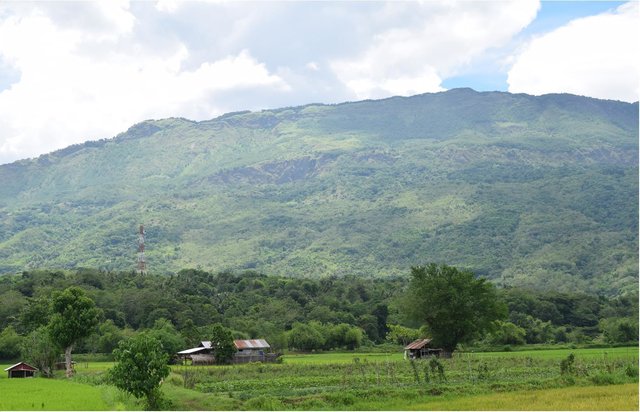
Community-Based Forest Management [Philippines]
Community-Based Forest Management (CBFM) refers to the organized efforts to work with communities in and near public forestlands with the intent to protect, rehabilitate, manage, conserve, and utilize the resources in partnership with the Local Government Units (LGUs) and other stakeholders.
- Compiler: Isabelita Austria
2. Description of the SLM Technology
2.1 Short description of the Technology
Definition of the Technology:
Growing of rattan is done by upland farmers as part of the Community-Based Forest Management (CBFM).
2.2 Detailed description of the Technology
Description:
Littuko (Calamus manilensis) is a large rattan variety belonging to the climbing-palm family Arecaceae which is commonly found in the Cordillera, Caraballo, and Sierra Madre mountain ranges. It matures in seven years and bears 50 to 70 kilos of fruits each year. Its fruits are sweetish sour when ripe and are gathered around April to September.
Purpose of the Technology: The littuko provides green cover to the trees even in the dry months and in case of wildfire,they reinforce the forest's capacity to serve as firebreaks or greenbreaks. It also attract a lot of wildlife ranging from insects (bees, fire flies, and beetles) to birds, bats, and cloud rats. Forests with littuko become equipped with natural guards since the littuko's spines with sturdy thorns discourage people and stray animals to freely enter the forest area and disturb the ecosystem.Conservation of trees is also promoted on this technology.
Establishment / maintenance activities and inputs: For the cultivation of littuko, the following procedures are done: (1) Before planting into a seedbed or polyethylene bags (plastic planting bag), the hilar cover of the littuko seed is gently scraped with the use of a sharp knife. Removing the hilar cover enables the tiny plant to easily break out of the seed. (2) The sprout is transplanted to the designated area under the host tree when it reaches six inches in height and with at least three leaves. The chosen host tree is where the littuko can cling on for support to prevent lodging or breakage of stems. (3) Within one to three years, ring weeding is done around the littuko plant. (4) Maintenance and inputs are needed after three years to ensure its growth.
Natural / human environment: Littuko grows underneath of growing trees in the natural forest. They grow best in rainforests and no cultivation is needed.The area is under a humid agro climate with an average annual rainfall of 2000-3000 mm per year. Land users have an average holding of 0.5-1 hectare for the forestlands or woodlands.Most of them are stewards of the forest through the Community Based Forest Management Agreement (CBFMA) for 25 years and renewable for another 25 years.
2.3 Photos of the Technology
2.5 Country/ region/ locations where the Technology has been applied and which are covered by this assessment
Country:
Philippines
Region/ State/ Province:
Bayombong
Further specification of location:
Nueva Vizcaya
Map
×2.6 Date of implementation
If precise year is not known, indicate approximate date:
- 10-50 years ago
2.7 Introduction of the Technology
Specify how the Technology was introduced:
- through land users' innovation
Comments (type of project, etc.):
In 1984, 100 littuko seeds were planted by the land users and 70% are male plants.
3. Classification of the SLM Technology
3.2 Current land use type(s) where the Technology is applied

Forest/ woodlands
(Semi-)natural forests/ woodlands:
- Selective felling
- Non-wood forest use
Tree plantation, afforestation:
- Mixed varieties
Products and services:
- Timber
- Other forest products
- Nature conservation/ protection
Comments:
Major land use problems (compiler’s opinion): Logging, charcoal making and grazing since it was initially a grassland
Selective felling of (semi-) natural forests: Yes
Plantation forestry: Yes
Forest products and services: timber, other forest products / uses (honey, medical, etc.), nature conservation / protection
Future (final) land use (after implementation of SLM Technology): Forests / woodlands: Fo: Other
If land use has changed due to the implementation of the Technology, indicate land use before implementation of the Technology:
Grazing land: Ge: Extensive grazing land
3.3 Further information about land use
Number of growing seasons per year:
- 1
Specify:
Longest growing period from month to month: perennial
3.4 SLM group to which the Technology belongs
- natural and semi-natural forest management
3.5 Spread of the Technology
Specify the spread of the Technology:
- evenly spread over an area
If the Technology is evenly spread over an area, indicate approximate area covered:
- 0.1-1 km2
Comments:
The area for the propagation of rattan is part of the Community Based Forest Management (CBFM).
3.6 SLM measures comprising the Technology

vegetative measures
- V5: Others
Comments:
Main measures: vegetative measures
Specification of other vegetative measures: Involve the use of vines
Type of vegetative measures: scattered / dispersed
3.7 Main types of land degradation addressed by the Technology

soil erosion by water
- Wt: loss of topsoil/ surface erosion

chemical soil deterioration
- Cn: fertility decline and reduced organic matter content (not caused by erosion)

physical soil deterioration
- Pc: compaction

biological degradation
- Bc: reduction of vegetation cover
- Bh: loss of habitats
- Bq: quantity/ biomass decline
Comments:
Main type of degradation addressed: Bc: reduction of vegetation cover, Bh: loss of habitats, Bq: quantity / biomass decline
Secondary types of degradation addressed: Wt: loss of topsoil / surface erosion, Cn: fertility decline and reduced organic matter content, Pc: compaction
Main causes of degradation: deforestation / removal of natural vegetation (incl. forest fires) (Cutting of trees), land tenure (Insecurity (open access))
Secondary causes of degradation: crop management (annual, perennial, tree/shrub) (More on annual crops), overgrazing (Cattle raising), change in temperature, droughts, population pressure (Increase of population that leads to the increase of cutting of trees.)
3.8 Prevention, reduction, or restoration of land degradation
Specify the goal of the Technology with regard to land degradation:
- restore/ rehabilitate severely degraded land
Comments:
Main goals: rehabilitation / reclamation of denuded land
4. Technical specifications, implementation activities, inputs, and costs
4.1 Technical drawing of the Technology
4.2 Technical specifications/ explanations of technical drawing
Rattan vine planted in the forest with rattan made basket used in transporting littuko seeds in the market.On top is the scarification of the littuko seed to induce seed growth.
Location: Brgy. Buenavista. Bayombong, Nueva Vizcaya
Date: June 25,2015
Technical knowledge required for land users: high (Need skills in seed propagation and use of scarification of seeds.)
Main technical functions: promotion of vegetation species and varieties (quality, eg palatable fodder), Conservation of trees which serve as host or anchor trees
Secondary technical functions: control of raindrop splash, increase in organic matter, increase of biomass (quantity), Control weeds
Scattered / dispersed
Vegetative material: O : other
Number of plants per (ha): 1000
Other species: Vine (rattan)
4.3 General information regarding the calculation of inputs and costs
other/ national currency (specify):
Pesos
Indicate exchange rate from USD to local currency (if relevant): 1 USD =:
45.0
Indicate average wage cost of hired labour per day:
3.33
4.4 Establishment activities
| Activity | Type of measure | Timing | |
|---|---|---|---|
| 1. | Nursery establishment through seed bed | Vegetative | Before the onset of rainy seasons |
| 2. | Transplanting | Vegetative | After 8-12 months of seeding |
4.5 Costs and inputs needed for establishment
| Specify input | Unit | Quantity | Costs per Unit | Total costs per input | % of costs borne by land users | |
|---|---|---|---|---|---|---|
| Labour | Labour for nursery | Person/day | 1.0 | 3.3333 | 3.33 | 100.0 |
| Labour | Transplanting | Person/day | 1.0 | 3.3333 | 3.33 | 1000.0 |
| Plant material | Seedling | Seeds | 1000.0 | 0.22222 | 222.22 | 100.0 |
| Total costs for establishment of the Technology | 228.88 | |||||
4.6 Maintenance/ recurrent activities
| Activity | Type of measure | Timing/ frequency | |
|---|---|---|---|
| 1. | Weeding | Vegetative | Once a week for 2 years (maybe done once a month) |
| 2. | Harvesting | Vegetative | After 5-8 years of planting |
4.7 Costs and inputs needed for maintenance/ recurrent activities (per year)
| Specify input | Unit | Quantity | Costs per Unit | Total costs per input | % of costs borne by land users | |
|---|---|---|---|---|---|---|
| Labour | Weeding | Person/day | 2.0 | 3.333 | 6.67 | 100.0 |
| Labour | Harvesting | Person/day | 4.0 | 3.333 | 13.33 | 100.0 |
| Total costs for maintenance of the Technology | 20.0 | |||||
5. Natural and human environment
5.1 Climate
Annual rainfall
- < 250 mm
- 251-500 mm
- 501-750 mm
- 751-1,000 mm
- 1,001-1,500 mm
- 1,501-2,000 mm
- 2,001-3,000 mm
- 3,001-4,000 mm
- > 4,000 mm
Agro-climatic zone
- humid
Thermal climate class: tropics
5.2 Topography
Slopes on average:
- flat (0-2%)
- gentle (3-5%)
- moderate (6-10%)
- rolling (11-15%)
- hilly (16-30%)
- steep (31-60%)
- very steep (>60%)
Landforms:
- plateau/plains
- ridges
- mountain slopes
- hill slopes
- footslopes
- valley floors
Altitudinal zone:
- 0-100 m a.s.l.
- 101-500 m a.s.l.
- 501-1,000 m a.s.l.
- 1,001-1,500 m a.s.l.
- 1,501-2,000 m a.s.l.
- 2,001-2,500 m a.s.l.
- 2,501-3,000 m a.s.l.
- 3,001-4,000 m a.s.l.
- > 4,000 m a.s.l.
Indicate if the Technology is specifically applied in:
- not relevant
5.3 Soils
Soil depth on average:
- very shallow (0-20 cm)
- shallow (21-50 cm)
- moderately deep (51-80 cm)
- deep (81-120 cm)
- very deep (> 120 cm)
Soil texture (topsoil):
- medium (loamy, silty)
Topsoil organic matter:
- medium (1-3%)
5.4 Water availability and quality
Ground water table:
on surface
Availability of surface water:
good
Water quality (untreated):
good drinking water
5.5 Biodiversity
Species diversity:
- medium
5.6 Characteristics of land users applying the Technology
Market orientation of production system:
- mixed (subsistence/ commercial
Off-farm income:
- less than 10% of all income
Relative level of wealth:
- poor
- average
Individuals or groups:
- individual/ household
Gender:
- women
- men
Indicate other relevant characteristics of the land users:
Land users applying the Technology are mainly common / average land users
Population density: 10-50 persons/km2
75% of the land users are average wealthy and own 75% of the land.
25% of the land users are poor and own 25% of the land.
5.7 Average area of land owned or leased by land users applying the Technology
- < 0.5 ha
- 0.5-1 ha
- 1-2 ha
- 2-5 ha
- 5-15 ha
- 15-50 ha
- 50-100 ha
- 100-500 ha
- 500-1,000 ha
- 1,000-10,000 ha
- > 10,000 ha
Is this considered small-, medium- or large-scale (referring to local context)?
- small-scale
Comments:
Just woodland, no crop or grazing land
5.8 Land ownership, land use rights, and water use rights
Land ownership:
- state
Land use rights:
- communal (organized)
Water use rights:
- communal (organized)
Comments:
CBFM Agreement, Certificate of Stewardship Contract of 10-25 years
5.9 Access to services and infrastructure
health:
- poor
- moderate
- good
education:
- poor
- moderate
- good
technical assistance:
- poor
- moderate
- good
employment (e.g. off-farm):
- poor
- moderate
- good
markets:
- poor
- moderate
- good
energy:
- poor
- moderate
- good
roads and transport:
- poor
- moderate
- good
drinking water and sanitation:
- poor
- moderate
- good
financial services:
- poor
- moderate
- good
6. Impacts and concluding statements
6.1 On-site impacts the Technology has shown
Socio-economic impacts
Production
crop production
wood production
risk of production failure
Water availability and quality
drinking water availability
water availability for livestock
water quality for livestock
Income and costs
farm income
diversity of income sources
Other socio-economic impacts
Difficulty to harvest
Comments/ specify:
Difficult to harvest since host tree is tall
Socio-cultural impacts
food security/ self-sufficiency
cultural opportunities
community institutions
conflict mitigation
Improved livelihood and human well-being
Comments/ specify:
The littuko fruits provide additional income to community based forest management implementer/participants.
Ecological impacts
Soil
soil organic matter/ below ground C
Biodiversity: vegetation, animals
plant diversity
beneficial species
habitat diversity
Climate and disaster risk reduction
emission of carbon and greenhouse gases
Other ecological impacts
Conservation of trees
Comments/ specify:
Conservation of trees is promoted because trees serve as hosts for the growing of rattan
6.3 Exposure and sensitivity of the Technology to gradual climate change and climate-related extremes/ disasters (as perceived by land users)
Gradual climate change
Gradual climate change
| Season | Type of climatic change/ extreme | How does the Technology cope with it? | |
|---|---|---|---|
| annual temperature | increase | well |
Climate-related extremes (disasters)
Meteorological disasters
| How does the Technology cope with it? | |
|---|---|
| local rainstorm | well |
Climatological disasters
| How does the Technology cope with it? | |
|---|---|
| drought | not well |
Hydrological disasters
| How does the Technology cope with it? | |
|---|---|
| general (river) flood | not known |
6.4 Cost-benefit analysis
How do the benefits compare with the establishment costs (from land users’ perspective)?
Short-term returns:
slightly positive
Long-term returns:
very positive
How do the benefits compare with the maintenance/ recurrent costs (from land users' perspective)?
Short-term returns:
slightly positive
Long-term returns:
very positive
6.5 Adoption of the Technology
- more than 50%
If available, quantify (no. of households and/ or area covered):
200 households and 70 percent of land
Of all those who have adopted the Technology, how many have did so spontaneously, i.e. without receiving any material incentives/ payments?
- 0-10%
Comments:
100% of land user families have adopted the Technology with external material support
200 land user families have adopted the Technology with external material support
There is a strong trend towards spontaneous adoption of the Technology
Comments on adoption trend: Land users are adopting the technology since littuko seedlings nursery are established for the propagation of planting of rattan in the village and its neighboring area.
6.7 Strengths/ advantages/ opportunities of the Technology
| Strengths/ advantages/ opportunities in the land user’s view |
|---|
|
Littuko vine is multi-purpose. Its fruits are used for food consumption while its poles are used as handicrafts/furniture. How can they be sustained / enhanced? Provision of technical assistance in the development of product using rattan as the raw material. |
| Strengths/ advantages/ opportunities in the compiler’s or other key resource person’s view |
|---|
|
Littuko fruit is not perishable. It could be stored for a period of time under normal conditions. This could be used as condiments and ornaments. How can they be sustained / enhanced? Providing assistance in processing the littuko fruits such as creating jams, candies and others using the fruit. In this way, the marketability and market value of the product will be increased. |
| Low maintenance as a crop. Contributory to trees and it helps in the reduction of soil erosion. |
6.8 Weaknesses/ disadvantages/ risks of the Technology and ways of overcoming them
| Weaknesses/ disadvantages/ risks in the compiler’s or other key resource person’s view | How can they be overcome? |
|---|---|
| Difficult to harvest since the host tree is tall.It does not grow in open areas and does not stand alone. | Development of a tool that could be used in harvesting the fruit and planting of trees as pole stand to avoid lodging or breakage of littuko vine. |
Links and modules
Expand all Collapse allLinks

Community-Based Forest Management [Philippines]
Community-Based Forest Management (CBFM) refers to the organized efforts to work with communities in and near public forestlands with the intent to protect, rehabilitate, manage, conserve, and utilize the resources in partnership with the Local Government Units (LGUs) and other stakeholders.
- Compiler: Isabelita Austria
Modules
No modules


